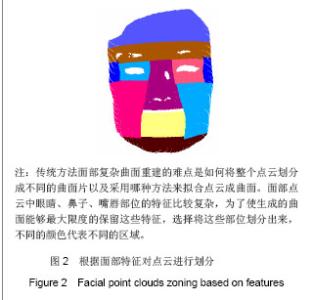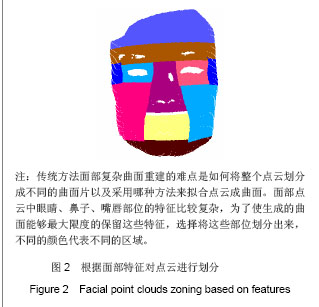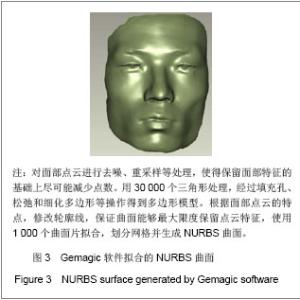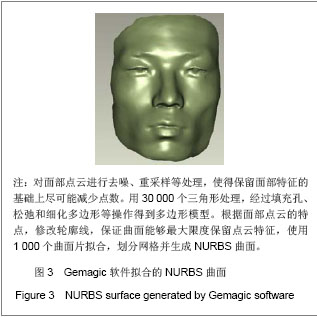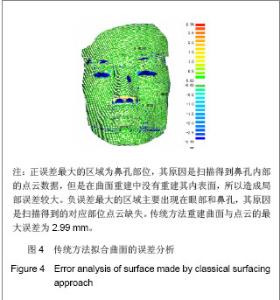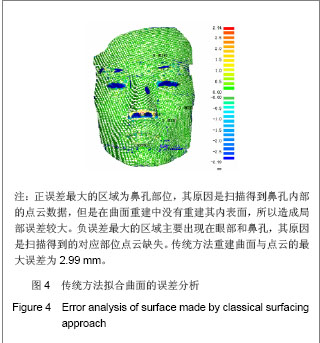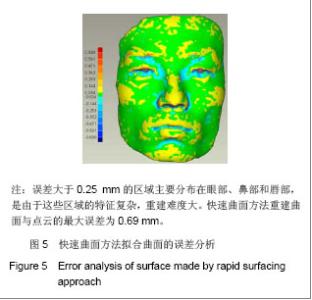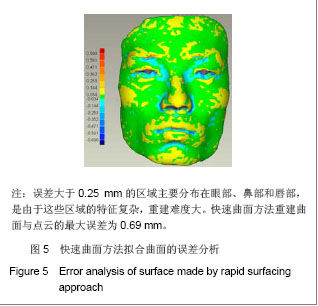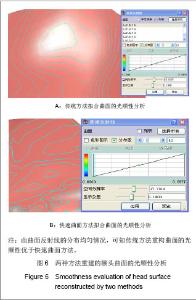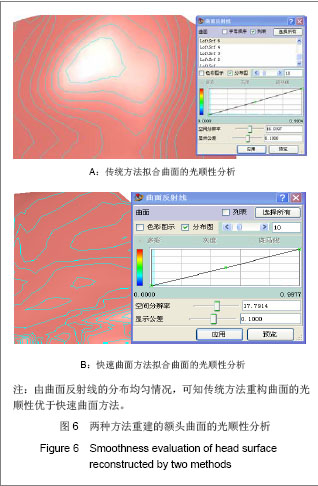| [1] Xu ZQ,Yan M,Zhang BF,et al. Tianjin Daxue Xuebao. 2001; 34(3): 404-407.许智钦,闫明,张宝峰,等. 逆向工程技术三维激光扫描测量[J].天津大学学报,2001,34(3):404-407.[2] Jiang J,Qi WJ, Adli Moming. Jisuanji Yingyong yu Ruanjian. 2012;29(1):128-130.江静,祁文军,阿地力•莫明.快速成型技术在唇裂修复上的应用[J]. 计算机应用与软件,2012,29(1):128-130.[3] Feng XH,Li YP,Wei JH,et al. Zhongguo Meirong Yixue. 2009; 18(5): 632.封兴华,李云鹏,魏建华,等. 融合VTK 技术的唇裂手术仿真系统的初步研究[J].中国美容医学,2009,18(5): 632.[4] Wang SY,Qian SS,Meng S,et al. Zhongguo Zuzhi Gongcheng Yanjiu yu Linchuang Kangfu. 2008;12(39):7657-7660.王殊轶,钱省三,孟石,等. 面部三维特征提取与分类[J]. 中国组织工程研究与临床康复,2008,12(39):7657-7660.[5] Ran Y,Gong YY,He P. Jiguang Zazhi. 2010;31(3):56-57.冉洋,龚媛媛,何鹏.应用激光快速原形及逆向工程技术辅助个性化人工整形的实验研究[J].激光杂志,2010,31(3):56-57.[6] Schwenzer-Zimmerer K, Haberstok J, Kovacs L,et al.3D surface measurement for medical application--technical comparison of two established industrial surface scanning systems.J Med Syst. 2008;32(1):59-64.[7] Ciocca L, De Crescenzio F, Fantini M,et al.CAD/CAM bilateral ear prostheses construction for Treacher Collins syndrome patients using laser scanning and rapid prototyping.Comput Methods Biomech Biomed Engin. 2010;13(3):379-386.[8] Kovacs L, Zimmermann A, Wawrzyn H,et al. Computer aided surgical reconstruction after complex facial burn injuries -- opportunities and limitations. Burns. 2005;31(1):85-91.[9] Shi GQ. Zhongguo Zuzhi Gongcheng Yanjiu yu Linchuang Kangfu. 2009;13(30): 5819-5822.石更强.利用激光扫描和计算机辅助设计/制造技术进行膝关节骨骼的仿生构建[J].中国组织工程研究与临床康复,2009,13(30): 5819-5822.[10] Zhang HL,Wang XJ,Jia Y,et al. Zhongguo Meirong Yixue. 2007; 16(5):649-652.张海林,王晓军,贾懿,等. 应用逆向工程技术构建三维耳郭模型[J].中国美容医学,2007,16(5):649-652.[11] Meng FW,Wu LS,Luo LP. Jiguang yu Hongwai. 2010;40(3): 334-338.孟凡文,吴禄慎,罗丽萍.三维面部数据采集与NURBS曲面重构[J]. 激光与红外,2010,40(3):334-338.[12] Long X,Zhong YX,Li RJ,et al. Qinghua Daxue Xuebao:Ziran Kexueban. 2002;42(4):477- 480.龙玺,钟约先,李仁举,等.结构光三维扫描测量的三维拼接技术[J]. 清华大学学报:自然科学版,2002,42(4):477-480.[13] Meng FW,Wu LS. Guangxue Jingmi Gongcheng. 2009;17(4): 825-831.孟凡文,吴禄慎.用继承与优化算法精密拼接无序点云[J].光学精密工程,2009,17(4): 825-831.[14] Zhang HW,Zhao XS,Zhang GX. Tianjin Daxue Xuebao. 2002; 3(2):183-186.张宏伟,赵小松,张国雄.三维曲面重构技术[J].天津大学学报, 2002, 3(2):183-186.[15] Su H,Wang LY,Zhan ZL,et al. Kunming Ligong Daxue Xuebao. 2001;26(4):81-84.苏海,汪林祥,詹肇麟,等.反求工程中几种自由曲面重构方法的分析[J]. 昆明理工大学学报,2001,26(4):81-84.[16] Ge JH. Tonghua Shifan Xueyuan Xuebao. 2003;3(2):33-36.葛金辉.曲面重构算法的发展现状述析[J].通化师范学院学报, 2003,3(2):33-36.[17] Cheng SY,Xie SW. Beijing:Tsinghua University Press.2010.成思源,谢韶旺. Geomagic Studio逆向工程技术及应用[M].北京:清华大学出版社,2010.[18] Yu JH,Hu ZY,Hou GH,et al. Jixie Zhizhao yu Zidonghua. 2009; 38(1):113-115.于景华,胡志勇,侯国华,等.基于Imageware的点云分割[J].机械制造与自动化, 2009,38(1):113-115.[19] Sohmura T, Nagao M, Sakai M,et al. High-resolution 3-D shape integration of dentition and face measured by new laser scanner.IEEE Trans Med Imaging. 2004;23(5):633-638.[20] Liu BJ,Xu ZJ,Wang W,et al. Jixie yu Dianzi. 2001(5):49-52.刘保嘉,徐宗俊,王巍,等.曲线及曲面的光顺性研究[J].机械与电子,2001(5):49-52. |
